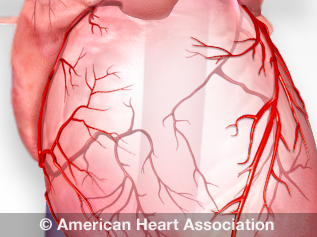Coronary Artery Disease - Coronary Heart Disease
Coronary heart disease is a common term for the buildup of plaque in the heart’s arteries that could lead to heart attack or ischemic stroke. But what about coronary artery disease? Is there a difference?
The short answer is often no — health care professionals frequently use the terms interchangeably. However, coronary heart disease, or CHD, is actually a result of coronary artery disease, or CAD.
With CAD, plaque first grows within the walls of the coronary arteries until the blood flow to the heart’s muscle is limited, which prevents the heart muscle from receiving enough oxygen. This is also called ischemia. It may be chronic, the gradual narrowing of the coronary artery over time, reducing the blood supply to part of the muscle. Or it can be acute, resulting from a sudden rupture of a plaque and the formation of a blood clot. For most people, plaque buildup starts in childhood and gets worse as they get older.
View an illustration of coronary arteries.
The traditional risk factors for coronary artery disease are high LDL cholesterol, low HDL cholesterol, high blood pressure, family history, diabetes, smoking and obesity. In men, the risk increases after age 45. In women, the risk increases after 55.
Research shows that children and youth are increasingly at risk for CAD. So, preventive measures taken early in life can have greater lifetime benefits. Healthy lifestyles will delay the progression of CAD, and there is hope that it can be improved before it causes further health problems.
Living a healthy lifestyle that combines good nutrition, weight management and getting plenty of physical activity can play a big role in avoiding CAD.

Apoyo que te ayuda a levantarte

Nuestra comunidad en línea de pacientes, sobrevivientes y cuidadores está aquí para que sigas adelante sin importar los obstáculos. Estamos para apoyarte y no te abandonaremos.







